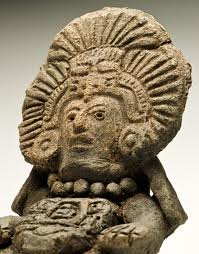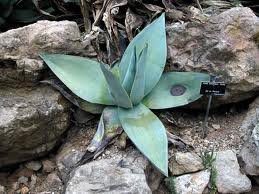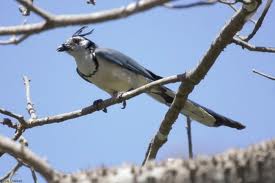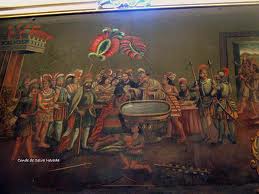
![]()
Index • |
Welcome • |
About
Us • |
21st Century • The Future |
World
Travel • Destinations |
Reviews • Books & Film |
Dreamscapes • Original Fiction |
Opinion
& Lifestyle • Politics & Living |
Film
Space • Movies in depth |
Kid's
Books • Reviews & stories |
Dreamscapes Two • More Original Fiction |
The International Writers Magazine: Tehuantepec, Oaxaca, México
Discovering Guiengola
• Andrew Dunlop
The sun has just risen over the arid western plain of the Isthmus of Tehuantepec. Wispy cirrus clouds tinged with the orange hues of dawn make a half-hearted attempt to stifle the growing heat of the day.
Fatigue sears rings around my eyes, but the scent of adventure propels me down the sidewalk for I am headed to the ancient Zapotec mountaintop fortress of Guiengola.
Making my way through a gaggle of inquisitive teenage schoolgirls, over the railroad tracks and across Highway 190, I arrive at a large traffic island dividing the road. Parked in a perfectly straight line, taxi drivers waiting for fares woozily engage each other, while those who work in nearby Salina Cruz board waiting buses, off to perform their daily penance.
Through the crowd, I see a tall man wearing dark aviator sunglasses and a Marine Corps style cap leaning on the boot of a taxi. Based on his self-description, I knew it had to be my guide, Victor Martinez.
“Andrew, correct?”
“Buenos dias… Victor?”
“Pleasure to meet you. Hurry, let’s get moving so we can beat the heat.”
Victor had a quick conversation with the young cabbie named Rodolfo, and we hopped in.
With the windows open and a cumbia playing on the stereo we streaked north across the parched expanse. 15 km out of Tehuantepec town an army checkpoint at Puente Tejas marks the spot where a dirt road to Guiengola forks off to the right. Rodolfo exchanged a knowing glance with a soldier, and we were waved around.
Out of its element, the small Nissan sedan struggled mightily over the deeply rutted road, the gravel so deep it was like sand. “Anything for 250 pesos in this economy, right guys?” Rodolfo remarked with a nervous laugh.
After a few kilometers, the road improves and gradually starts to ascend the mountain in a series of switchbacks. About two-thirds of the way up the mountain, the road ends in a little cul de sac and a trail to the fortress continues. The oft-absent caretaker polices the site from a makeshift hut on this spot, monitoring visitor traffic by maintaining a log book. To protect against the searing sun, he rigged a large blue tarpaulin between some trees while underneath two hammocks hang, creating a comfortable, shady work area. A shiny new aluminum sign declaring your presence on federal property is strategically placed at the entrance to the trail a few meters away. In a loving nod to all things old and in the way, a roughly-hewn wooden arrow attached to the sign by some rusty old wire indicates the right direction.
After making arrangements with Rodolfo for the afternoon return trip, Victor and I were ready to set off up the trail when he turned and asked me in a serious voice, “What is the purpose of your visit to Guiengola? It’s very important that I know.”
“To understand, appreciate and learn the history and culture of this place. Ever since I read Mexico South-The Isthmus of Tehuantepec by Miguel Covarrubias I have wanted to see Guiengola,” I said.
“Very well, then,” said Victor as he held his arms out and looked up into the sky, reciting a verse or prayer I could not understand.
“This is an extremely powerful place, full of magic. I must ask the spirits permission to enter. Not everyone should visit this place; not everyone is granted permission.”
“How do you know if permission is denied?” I asked.
“It happens rarely, but when it does the sprits are very clear. Once, when I was with two Germans, a rattlesnake blocked our way on the trail. I knew we needed to leave immediately. I told them the caretaker had spotted a puma in the immediate area and wouldn’t let us in.”
I was instantly enthralled. “When was the last time a puma was seen in these parts?”
“Oh, about a century ago, I’d guess.”
Going back more than five centuries to the 1490s, the land encompassing much of what is now Oaxaca was ruled by the Zapotec people and their king, Cosijoeza. During this time the Zapotecs were facing extreme pressure from the ever-expanding Aztec Empire based in Tenochtitlan, present day Mexico City, 350 miles away. War broke out, and the Aztecs eventually occupied nearly all strategic points across the Isthmus of Tehuantepec. Cosijoeza forged an emergency alliance with the neighboring Mixtec people and escaped with what was left of his army to the newly constructed mountaintop fortress of Guiengola. Sometime in 1496, the Aztecs sent an army to lay siege to Guiengola, capture Cosijoeza and crush the Zapotecs once and for all. To survive the long siege, guerilla style attacks were carried out during the night in coordination with attacks on the Aztec flank by the Mixtecs. In due course, the Zapotecs ground down the opposing army, now also the victim of increasing sickness and severed supply lines. In one of the rare instances in the history of the Aztec Empire, the military action was ultimately unsuccessful. The Zapotecs and Mixtecs prevailed through a combination of resourcefulness, military cunning and luck. The Aztecs were forced to negotiate a peace, forming an alliance with Cosijoeza to ensure a safe trade route to Guatemala, vital to the economic survival of their empire.
From the Spanish Conquest 25 years later until the mid-Twentieth Century, Guiengola was primarily known to locals as a base for bandits and thieves of various kinds. The most famous of these was Nicanor Diaz, the “Tehuantepec Robin Hood,” who operated during the 1920s and 1930s. Today, Guiengola is just another mountain to most in Tehuantepec, its greatest appeal being that it is a prime iguana hunting ground (iguana is a local delicacy, found on menus across the Isthmus region). When told of my intention to visit, two different taxi drivers around town replied with the same “What for? There’s nothing up there…” kind of theme.
Knowing that I studied history, Victor correctly guessed that I was interested in every little detail imaginable, and he obliged. En route to the main plaza, we investigated each successive lookout and residential area as we ascended the mountain, taking in every small court, stairway, chamber, and terrace. Most fascinating is the battlement wall, found about halfway up to the main plaza. Appearing to have once surrounded the entire mountain but now fallen in many places, it consists of layered slabs of sedimentary rock, averaging eight to ten feet high and five feet thick. Victor pointed out piles of stones at regular intervals along the wall, meant to be used as ammunition in the event of an Aztec attack. The mere fact that many of these piles are still intact after 500 years is precisely why Guiengola is worth both visiting and preserving for future generations.
The site as a whole is deteriorating rapidly as nature reclaims the now defenseless fortress. Large cacti and succulents have begun to push through and knock over many sections of the battlement wall, as well as threatening the structural integrity of the pyramids. Rooted in the side of one, a flowering succulent thrusts toward the sky at an improbable angle, underscoring the fragile beauty of Guiengola. The site is much larger than I had anticipated, based on my prior reading. “The truth is that we don’t even fully know what we have here,” says Victor, “Every time I come here I discover something new.”
According to Victor, 50% of the site has been properly recorded and catalogued, and only 5% cleared or excavated, due to the efforts of a series of researchers beginning in the 1920s. Of particular note is the American botanist, amateur anthropologist, collector, writer and explorer Thomas B. MacDougall, who made annual trips to the site during the 1940-1970 time period.
The National Institute of Anthropology and History (INAH), after years of lobbying by interested locals like Victor, has only recently taken an interest in preserving and improving the Guiengola site, albeit on a very limited basis. In recent years the caretaker was installed, and lucky for me, the main plaza of the ruins had been cleared of brush and overgrowth just three weeks before my visit. Victor believes that the only way to turn Guiengola into a viable touristic site is to construct an aerial cable car from somewhere near the Army checkpoint at Puente Tejas to the top. Judging from the rigorous hike and 95°F (35°C) temperature, he probably has a point.
Looking deeper, the effort to develop and preserve Guiengola has been sidetracked by an unfortunate reality of civic life in Mexico. While the federal government owns the Guiengola site itself, the municipal government of Tehuantepec owns much of the land surrounding it, thereby controlling public access. INAH has made many overtures to the municipal government, promising to create dozens of sustainable jobs for locals through investment in the site. Municipal leaders and affected landowners, however, want to be paid handsomely in return for granting access. With a limited annual budget handed down from the federal government to spread over hundreds of archaeological sites, INAH doesn’t have the money or willpower to both buy off the local politicians and fund major improvements, especially for a site with such difficult ingress. A potential touristic jewel thus sits deteriorating in obscurity, the victim of petty infighting and profiteering.
About an hour into the hike, Victor spied two gorgeous Shuy (local dialect) birds frolicking amongst the tree tops. Victor watched them with the delight of a small child. Finally, he spoke. “The Shuy are the protectors of this site, the eyes and ears of the spirits. One usually follows visitors around the site, making sure everyone respects the land, but in my nearly 15 years coming here I have never seen two Shuy birds together. Never. This could be a mating dance, but you were meant to come here. I told you this place is magical.”
Called White-Throated Magpie Jays in English, they are medium to large corvids with a long and lean body, blue dorsal and white ventral feathers, a striking black plume on the head and a long feathered tail that unfurls in flight. Finally we reached the main plaza. About 350 feet in length, it consists of two small pyramids each about 25 feet high on either end, one with a sunken rectangular court in front, as well as a modest, well-preserved ball court. Small patches of stucco with traces of red paint can still be seen on the sides of the pyramids, enabling the visitor to imagine them as they once appeared. The silence is overwhelming.
While Victor rested under a thatched palapa, he sent me off to explore the site. “Go find out for yourself,” he said. As I wandered around considering the various angles, I was accompanied by the two Shuy birds, observing my every step.
Adding to the peculiar nature of Guiengola is the issue of a water source. Everyone from Tehuantepec knows there isn’t one. How then did the Zapotec people survive during the siege? Spanish colonial historian Fray Francisco de Burgoa provided the only clue, based upon hearsay: “There were springs on top with sufficient water for all; nevertheless, he (Cosijoeza) ordered a great pool dug, to serve as nursery for live fish from the river.”
This small passage has inspired an archaeological treasure hunt of sorts. Generations of researchers have attempted to locate the springs and “great pool” without success. While there are some strong, yet unproven, theories as to the location of the pool, no one has ever located anything suggesting the existence of springs in the past.
After exploring the main plaza area, we walked over to Cosijoeza’s residence, where his personal bathtub remains intact. From the royal residence there are commanding views south to Tehuantepec and the Pacific, and east toward the former Aztec royal road from where their army approached Guiengola. Nearby is a small tomb complex, long since looted, where it is possible to descend a few feet inside and observe the technique used to construct them. On the east side of the main plaza, a secondary trail descends into a wood where the temperature mercifully drops ten degrees. A few hundred meters down the path a series of small cave complexes begins, each accessible by the layman spelunker. The promise of seeing Zapotec cave paintings and evidence of pre-Columbian campfires filled my imagination, but Victor quickly brought me back down to earth, wryly pointing to the places where modern-day teenagers have amorously scrawled their names on the cave walls. Amazingly, the caves haven’t revealed signs of ancient habitation or even regular use, despite the longstanding human presence on the mountain.
2 PM, time to go. The hike back down to the road was quick. When we arrived, the caretaker was present. Victor knew him from his many trips and introduced me. Reflecting the flora and terrain surrounding him, he was thin, gaunt and sun-baked, looking rather official in a new tan work shirt embroidered with the bright blue INAH symbol. He kindly offered the use of a hammock, which I gladly accepted as I scratched my name and hometown into the log book, beneath a pair of Canadians from Alberta who had visited two weeks before. We soon heard Rodolfo’s Nissan struggling up the mountainside, right on schedule.
Compared to better known sites, Guiengola is neither large, nor aesthetically impressive. Possessing an elemental beauty, Guiengola’s appeal is drawn out by its harsh and remote location. What it lacks in classic archaeological superlatives, however, it makes up for in intimacy and mystique. A strong historical narrative pervades the air, causing one to ponder about Cosijoeza and the siege. The appeal may lie in the sense of accomplishment knowing you are one of only a few hundred people to visit each year. Perhaps it is the fact that much of the site remains undiscovered, begging to reveal more secrets. Then again, it could be much simpler: the story of Guiengola is the story of the underdog, the Zapotec David to the Aztec Goliath, holding the mighty empire at bay through pluck and ingenuity. Who doesn’t like that kind of fairy-tale?© Andrew Dunlop Feb 2011
More travel in Hacktreks
adunlop22@yahoo.com





